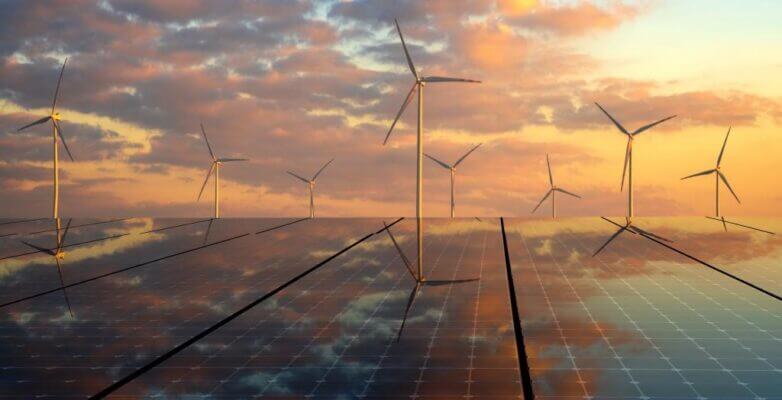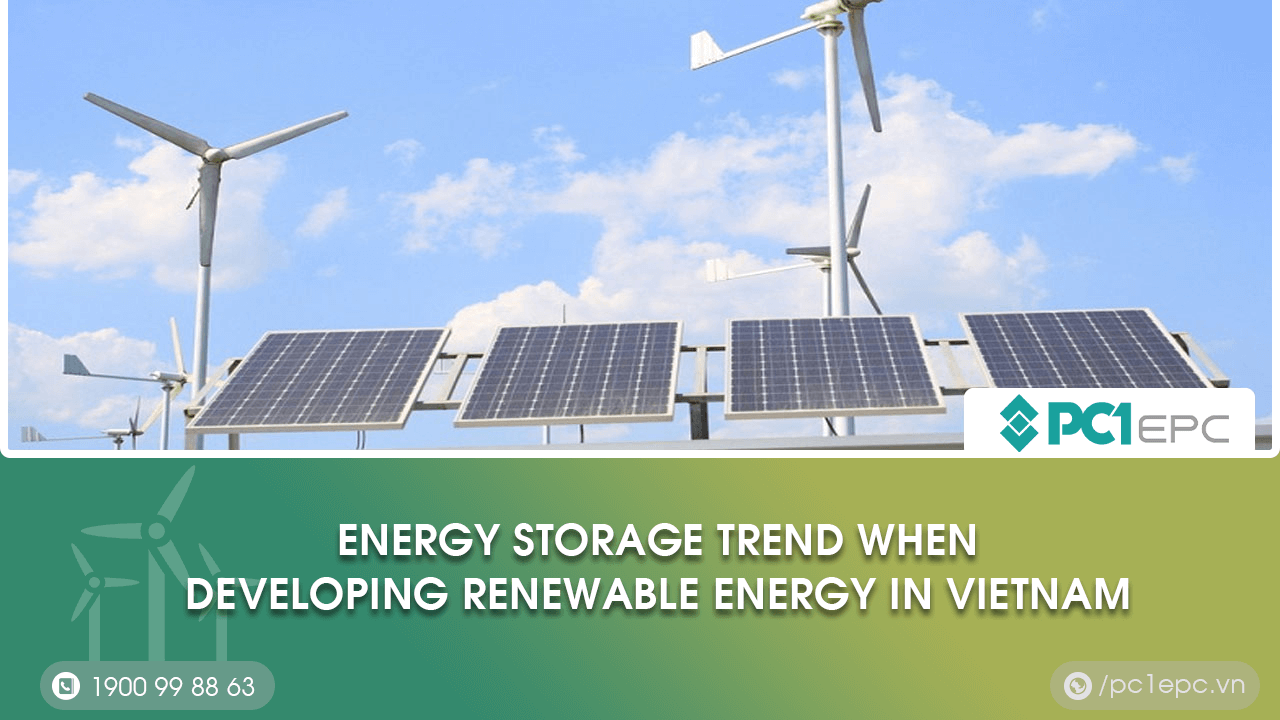Energy storage is a top concern not only in Vietnam but also in most countries around the world. With a high and strong growth rate from renewable energy sources, namely solar power and wind power, Vietnam’s electricity system is becoming more and more complete.
Current status of Vietnam’s electricity system
First of all, wind power is an energy source that is completely dependent on weather and climate and cannot be controlled. Their oscillations have a large amplitude in the range of installed capacity, and the generated power will bring very different indicators from time to time, month to month, or year to year. The amount of electricity consumed in months with little wind is only 14 times that of a month with strong winds.
Solar power, in contrast, is only generated during the day. Especially at noon, the capacity will skyrocket due to strong sunlight, then decrease quickly and not be able to play at its peak in the evening. Meanwhile, large projects that need highly flexible power sources, such as natural gas power and imported liquefied natural gas (LNG), are behind schedule and face many difficulties. Therefore, the system lacks a flexible backup power source to cope with the high rate of RE.
It can be seen that the peak demand for wind and solar power transmission increases the overload of the local grid and increases the demand for electricity from hydropower, coal, and gas. And, despite many innovative efforts to regulate the power source—the grid—the economic losses to investors and society are significant. Not only that, this situation forces the state to significantly reduce the capacity of power sources, including heat, hydro, and renewable electricity.
Various incentive mechanisms have been issued by the government for different types of renewable energy, including FIT preferential prices with contracts over 20 years, preferential income tax for businesses, equipment import tax, use of equipment, etc., land use, and access to finance.
The need and role of energy storage systems

Energy storage battery systems in many countries around the world have become an essential technology in demand management, renewable energy, and support for the development and operation of smart grids. Energy storage technology has four main groups, which are: thermal; electromechanical; electrochemical; and electric. According to international energy experts, as the penetration of renewable energy into the electricity system increases, accounting for 15% or more of output, the investment in energy storage will be of great significance and efficiency. economy.
So how do we figure out how to best operate the power system in the short and long term? Even at the present time, the power system is still facing a shortage of electricity at peak hours, cases of power overload due to the peak-trough shift and quite a few outstanding problems that need to be resolved. Therefore, we need storage sources right now to store excess energy from wind and solar power during times of low load, from which to feed into the system to cover peaks during peak hours. Energy storage also plays a big role when it comes to reducing layoffs, cutting capacity, and reducing economic and financial risks for many investors who are operating renewable power sources, mobilizing huge capital from the market. private access to clean power sources. As the percentage of variable renewable energy is increasing, the demand for energy storage will become larger and larger, and the role of this type is becoming increasingly important.
Challenges in energy development in Vietnam
Along with the benefits that this form of energy storage brings, we also need to recognize the significant challenges we will face.
Although the cost of storage batteries and technologies is reducing, costs are still high, especially for those with up to 4 hours of energy discharge per charge-discharge cycle. Solar and wind power investors can only invest in small-scale storage batteries to store a small part of their generation capacity at times of reduction and discharge the system at peak hours. Although this method can reduce the damage caused by cutting, the cost of electricity from batteries is high because there is no regulation on electricity prices for system ancillary services.
Next, there are no specific regulations or technical standards for storage systems. Technical standards are an important legal basis for all economic sectors to select appropriate equipment and technologies and participate in auxiliary services of the power system. On the other hand, because current storage batteries primarily use Lithium-ion technology, there may be environmentally hazardous wastes at the end of their life cycle, necessitating regulations governing environmental waste treatment for the environment.
Some proposals for the development of energy storage
In order for Vietnam to have the conditions and effective measures to mitigate greenhouse gas emissions, and achieve carbon neutrality by 2050 as committed, the role of energy storage, taking advantage of excess energy storage due to renewable energy sources that cannot be moderated during off-peak hours of demand, as well as re-streaming into the system during peak hours, are and will be increasingly important. Energy storage can soon be applied to charge electric transport devices with these “green” energy sources, reducing economic losses and financial risks for renewable power plants right from the start. In the future, this will facilitate the development of more renewable energy sources integrated into the system.
Many proposals have been made through the Scientific Conference, including the following:
“The government needs to continue to do more in-depth research, allowing the experimental application of power storage models on the Vietnamese power system to confirm the efficiency, necessity, and role of the energy storage system. (including electricity, heat, electrochemical, mechanical storage, etc.), from which regulations and mechanisms on auxiliary services of the power system can be promulgated, increasing the overall efficiency of the energy system. In the immediate future, it is proposed to add the volume of energy storage systems to the list 2021–2030 of the Power Master Plan VIII to serve as a basis for implementation.”
“As for the management and operation of the power system, it is recommended that the Ministry of Industry and Trade consider assigning EVN to invest in testing 100 to 200 MW of electricity storage batteries on the transmission grid, thereby gaining experience in expanding the market.”
“Recommending the Ministry of Industry and Trade for a pilot application on a small and very small scale of storage battery systems at solar and wind power plants in the short term, which can be combined with a third party — an equipment supplier — to jointly invest in the business. Smaller storage systems can reduce gridlock impacts.”
“To encourage initial projects, the government promulgates regulations that the selling price of electricity from storage batteries is equivalent to the electricity price during peak hours of the system or allows the selling price of electricity from renewable energy projects with investment in storage battery higher than conventional projects.”
“It is proposed that the Ministry of Industry and Trade urgently develop a regulatory mechanism for the Prime Minister to soon issue market regulations for power storage models, in which the mechanism for electricity storage as an auxiliary service to the power system (frequency, voltage stabilization, operational backup…).”
“Recommending the Ministry of Industry and Trade and the Ministry of Science and Technology to soon issue technical regulations for different types of energy storage, as a basis for selecting advanced and environmentally friendly technologies.”
“The Government and the Ministry of Industry and Trade need to create maximum conditions so that Bac Ai stored hydroelectricity can be completed soon before 2028, and at the same time, add other storage hydroelectric plants to support renewable energy and the power system in general in the long term./.”
See more: Energy storage solutions provided by PC1 Group


